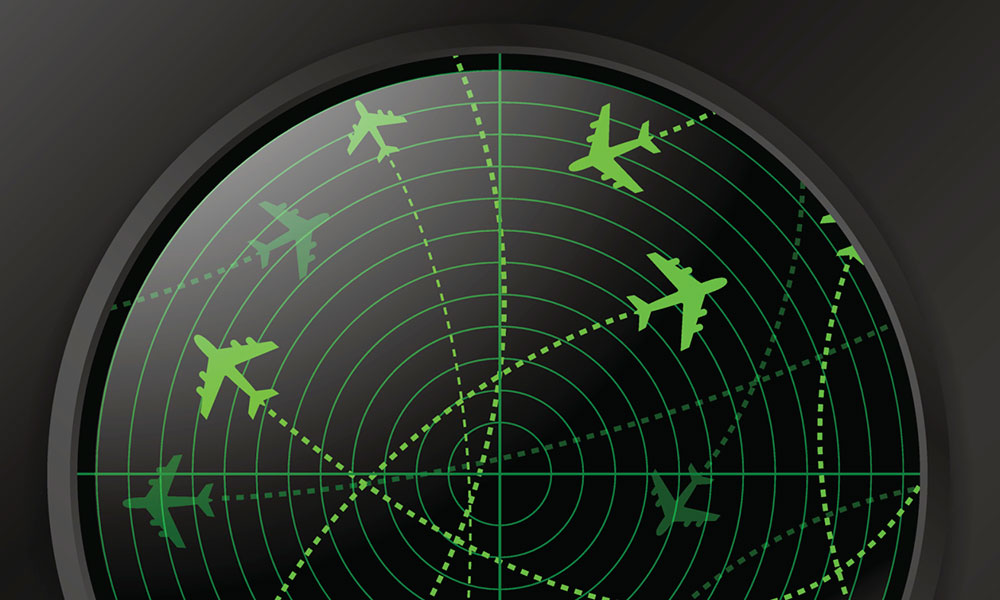Aviation has come a long way since the first powered airplane took flight over a century ago. What started as an experimental venture is now a multi-billion dollar industry transporting millions of passengers daily across the globe.
With such immense scale and complexity involved in air transport operations, ensuring safety has become a top priority. This is where flight tracking systems play a crucial role by monitoring aircraft movements and providing critical data in real-time.
The Evolution of Flight Tracking
In the early decades of commercial aviation, aircraft had very limited means to communicate their position and status to air traffic control centers on ground. Controllers had to rely primarily on voice communication and basic radar surveillance to manage air traffic flows.
This changed with the introduction of the Secondary Surveillance Radar (SSR) system in 1950s which allowed aircraft to automatically transmit identification, altitude and other data to ground stations via transponders.
By 1970s, the emergence of HF/VHF radio systems gave rise to the concept of continuous air-ground communication between aircraft and ATC. This enabled two-way exchange of key flight parameters and commands.
The 1990s saw the deployment of Aeronautical Telecommunications Network (ATN) that leveraged satellite communication technology for reliable air-ground data linking across oceans and remote regions.
Today, with advanced Flight Tracking System technologies like Automatic Dependent Surveillance-Broadcast (ADS-B) and satellite-based surveillance, aircraft can now be monitored in real-time throughout their flight journey with precision.
Modern Flight Tracking Systems
Most modern aircraft tracking is done through ADS-B which acts as a cooperative surveillance technology. ADS-B equipped aircraft periodically broadcast their GPS-derived position, altitude, speed and other information to nearby aircraft and ground stations.
The information is received by a network of ground receivers and relayed to air traffic control centers and flight tracking services. This allows controllers to track thousands of flights simultaneously on their radar screens as well as online tracking portals.
Some of the advanced air traffic services also receive aircraft position updates directly through satellite based flight information services like ARINC, SITAONAIR, etc. Aircraft are fitted with Satellite Communication (SATCOM) devices for transmitting digital flight data messages via geosynchronous satellites.
Alternatively, certain tracking providers tap into the data links of HF/VHF radio networks that support voice and text communication between aircraft and ground stations for monitoring international flights without relying on ADS-B coverage.
Importance of Flight Tracking
Flight tracking serves multiple critical purposes in ensuring aviation safety:
– Operational Awareness: Air traffic managers get real-time visibility of all aircraft under their jurisdiction for seamless coordination of flights.
– Search and Rescue: In case of emergencies, tracking data helps pinpoint aircraft location quickly for rescue operations. This was evident during the search for MH370.
– Safety Monitoring: Regulators can analyze flight data to detect anomalies and issues early on for proactive corrective actions.
– Flight Planning: Airlines get accurate estimates of aircraft position for improved estimates regarding timings for better crew and airport resource management.
– Incident Investigation: Detailed track records are vital evidence for investigators during accident probes to reconstruct the sequence of events.
– Security Monitoring: Suspicious flight deviations can be identified to determine any security or hijack threats. Tracking plays a key role in border surveillance too.
– Efficiency Gains: Precise tracking helps reduce fuel wastage and emissions through optimized routings and congestion management over busy airspaces.
Challenges & Future Prospects
While flight tracking technology has advanced greatly, challenges still persist particularly with global coverage over oceanic and polar regions where aircraft may not receive ADS-B signals from ground stations.
Also, existing radio communication networks like HF/VHF may lose effectiveness in maintaining real-time data links beyond line-of-sight ranges over oceans necessitating satellite-relayed position updates to supplement aircraft tracking.
Looking ahead, emerging technologies like space-based ADS-B receivers are expected to provide enhanced global coverage. Moreover, new satellite constellations with more compact low-earth orbit payloads promise improved message delivery latency for critical aircraft position broadcasts.
Investments are also being made to hardwire flight tracking via High-throughput Satcom links directly aboard aircraft rather than relying on intermittent radio/ADS-B signals to provide redundancy.
Machine learning algorithms are enabling analysis of massive flight data volumes to proactively detect irregular patterns and flag potential issues early for preventive steps. More advanced cockpit recorders could augment these efforts too.
While flight tracking systems have helped aviation safety immensely, continuous upgrades hold the key to overcoming remaining coverage gaps as air travel flourishes globally. The mutual goal remains achieving near real-time visibility and safety oversight of aircraft worldwide.
the evolution of advanced flight tracking technologies demonstrates aviation’s unrelenting focus on safety while enabling its tremendous growth. As air travel scales to even greater heights, innovative tracking solutions will remain integral to the vision of keeping skies safer globally.
*Note:
1. Source: Coherent Market Insights, Public sources, Desk research
2. We have leveraged AI tools to mine information and compile it

